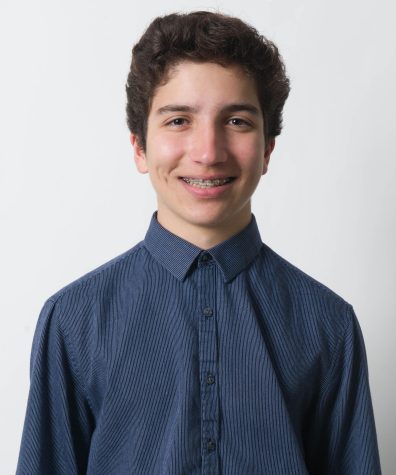A time to reflect
Vice Principal Bill Dargen explains the purpose of quarterly reflection surveys
At the end of each quarter, the administration sends out a survey in order to get feedback from students on their academic performance. According to Assistant Principal Bill Dargen, the goal of the surveys is to learn how students feel and allow them to think about their goals.
“We want to understand students,” Dargen said. “We want to give them the opportunity to reflect on their status in their classes, where they’re going, what their intentions are and what their hopes are.”
Administration is hoping that those who complete the survey benefit from considering the possible ways that they can increase their GPA.
“‘How do I make things better?’ That’s the question we want students to ask themselves,” Principal Jens Brandt said. “How do I do better in school if I’m not doing so well? How do I do better at managing stress? How do I do better at managing my academic course load if it’s becoming too overwhelming? How do I become more aware of what the expectations are of me?”
The survey also featured questions which suggested a change in a student’s peer group in order to boost academic performance.
“One of the most important questions I like to ask and I’d like students to ask themselves is ‘who am I surrounding myself with?’ That one is one of the number one indicators of student success in school,” Brandt said. “Is their peer group looking out for them? Do they have common goals? There are students who examine their peer group and decide, ‘I need to move away from it.’ What I really appreciate is that some students take it upon themselves to become a positive influence on their friends who are struggling a little bit.”
Of 2,841 students, only 848 responded to the survey.
“I’d say the number of responses is about expected,” Dargen said. “We would certainly hope for more. Half would have been impressive, and this isn’t quite half.”
Brandt says that he hopes for more students to participate next time, which will be after final exams when a new version of the survey is sent out.
“We’ll continue to work with ASB, we’ll make morning announcements and we just hope that more students take the time to answer these questions,” Brandt said. “The more data we can collect, the better understanding we get of our student population. But it’s also, more importantly, for individual students to take the time and reflect and set some goals. It makes a big difference. All research points to that if you write down a goal, you’re more likely to obtain it. It’s as simple as that.”
If students in need are still not completing the survey, teachers are working to make the learning process more engaging for students, which will increase academic achievement overall.
“One of the goals for this year that we’ve really focused on is creating classroom instruction called student-focused instruction,” Brandt said. “It’s really the students taking more ownership of the learning process. You may or may not have noticed, but in our classes, there’s much more collaborative learning. You’re more likely to retain information if you’re involved in the learning process.”
Of the 848 who responded, about 80 percent said that their GPA was around the same or higher than their class average.
According to Brandt, the survey is not only helpful to students who are struggling, but proficient ones as well because it can lead them to find a “healthy balance” between academics and their personal well-being.
“There are some students with very high GPA’s who may have to take a step back,” Brandt said. “I’m not saying that they should drop their GPA significantly, but what kind of effort are they putting into it? Is it causing them too much stress? Are they getting enough sleep? Some people think we’re only focusing on the students who are struggling in school academically. We’re also focusing on students who may be overextending themselves.”
According to Dargen, surveys are used to receive information, even though students might believe that the administration is “using a survey to fix problems”, such as low GPA’s, it is more for receiving information from students.
“We know that’s not what it is. It’s an opportunity for us to gain information and for students to reflect,” Dargen said. “We don’t see it as more than that. It’s not like we think, ‘oh we asked these questions and so, therefore, we’re going to have an immediate response.’ It’s more part of a bigger picture. Our administration believes that if people are always reflecting and thinking about what’s going on, then they will make changes. It’s an awareness thing.”
The survey is to remain voluntary, which leaves the choice of taking the survey up to students, despite administration’s efforts to promote it.
“At the end of the day it’s a choice whether or not they decide to participate in it,” Brandt said. “We’ll continue to do our best to advertise it to the best of our abilities. We’ll provide the avenue, and if people decide not to go down that avenue, then that’s their prerogative. We just want to increase participation. The more people who buy into it, of course, the better it is for everyone.”



